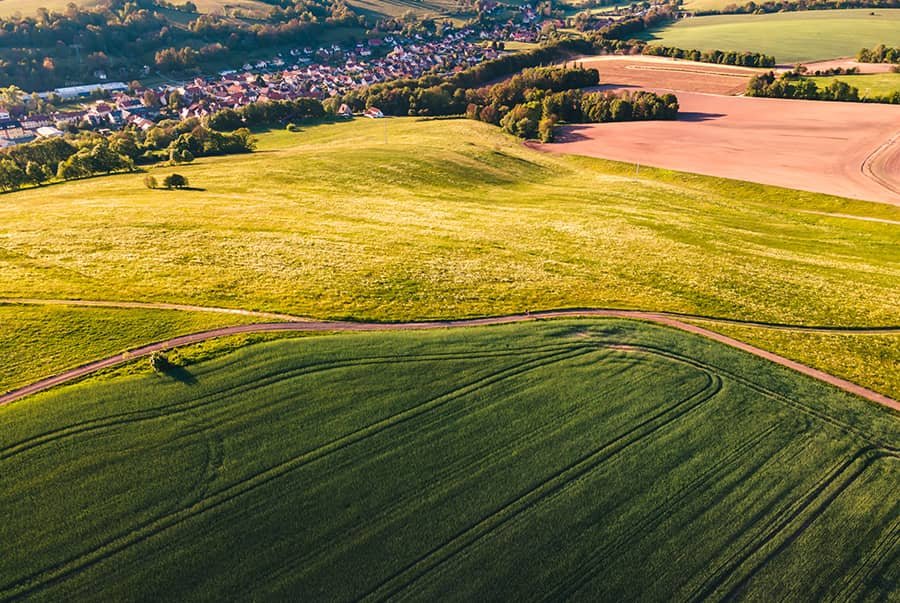
Desertification and climate change are interconnected and are accelerated dramatically in the last century caused by the development of industrial agriculture and increased use of fossil fuels and green gas and CO2 emissions into the atmosphere.
What is Desertification?
Desertification is a natural process that is associated with global climate change and by improper management practices, and overexploitation of soil as a result of human activity. Over time even forest and lush areas can be turned into deserts.
The development of deserts has occurred naturally, throughout geological history, but in recent times, the potential influences of human activity, improper land management, deforestation and climate change are the main reasons and subjects to scientific investigations.
Desertification affects not just ecosystems but the livelihoods of millions of people across the world.

Ways to Prevent Desertification?
The development of deserts has occurred naturally, throughout geological history, but in recent times, the potential influences of human activity, improper land management, deforestation and climate change are the main reasons and subjects to scientific investigations.
Tree Planting
Soil erosion is a natural process whereas a result of rainfall, wind and ice melt soil particles are moved around. But it can be increased dramatically due to human activities.
Sustainable forest management can help to prevent desertification. Planting trees will keep the ground fertile, and will stop/slow down mudflows. Trees on the mountain slopes, will absorb the rain, reforesting areas will reduce the CO2 concentration in the air and can create more jobs, produce food.
There are many examples that reforestation can work. For example, Israel has successfully replanted parts of the Negev, using irrigation techniques that store and channel water, and Kenya’s Green Belt Movement show how desertification can be done.
Soil Management
Unsustainable land and soil management practices include practices such as deforestation, overgrazing, and poorly managed irrigation.
In agriculture, some amount of soil management is needed both in nonorganic and organic types to prevent agricultural land from becoming poorly productive over decades. Good soil health can be beneficial for fertilization and pest control.
Specific soil management practices that affect soil health include:
- Reduce soil compaction, and reduce aeration and water infiltration.
- Planting cover crops that keep the soil anchored and covered in off-seasons so that the soil is not eroded by wind and rain.
- Crop rotations for row crops alternate high-residue crops with lower-residue crops to increase the amount of plant material left on the surface of the soil during the year to protect the soil from erosion.
- Nutrient management can help to improve the fertility of the soil and the amount of organic matter content, which improves soil structure and function.
- Tilling the soil, or tillage, is the breaking of soil, such as with a plow or harrow, to prepare the soil for new seeds.
- Adding organic matter to the soil surface can increase carbon in the soil and the abundance and diversity of microbial organisms in the soil.
- Using fertilizers increases nutrients such as nitrogen, phosphorus, sulfur, and potassium in the soil. The use of fertilizers influences soil pH and often acidifies soils. Fertilizers can be organic or synthetic.
Water Management
Improved water management practices optimize the use of water and minimize the environmental impact of water use on the natural environment.
Policies and practices of water management must focus on an integrated technical and scientific approach to develop and implement the management practices appropriately.
One very simple example for water management is using earth dams where water can be stored in wet season and used for irrigate crops during dry season.
Alternative Farming and Industrial Techniques
There are various alternatives to industrial farming that are much better for the environment, such as agroforestry, agroecology, and intercropping.
For example, agroecology is a farming approach that mimics the natural ecosystems and uses fewer resources but produces more food.
Agroforestry is also a better alternative, since it involves incorporating the cultivation and conservation of trees. This way the crops are also protected from the destructive effects of the wind and weather.
Intercropping is a more beneficial alternative to industrial farming and includes three types of intercropping, such as row cropping, mixed cropping, and temporal intercropping. The benefits of using this technique are that the crops are more biodiversity and grown beside different plans between the rows, maximizing growing space.
Communication and Cooperation
One way this can be solved is by communicating and cooperating at all levels. Coordinating efforts across the globe and unite to prevent and reduce the impact of climate change.
A simple example is an undergoing project in Africa called Africa’s Great Green Wall restoration program, where 10 countries: Burkina Faso, Eritrea, Ethiopia, The Gambia, Mali, Mauritania, Niger, Nigeria, Senegal and Sudan currently are coordinating efforts to stop the expansion of the Sahara desert to South.
Government needs to work together and funds to be redirected to projects fighting the desertification.
Final Thoughts
Drylands occupy some 40–41% of Earth’s surface area and are home to more than 2 billion people. It has been estimated that some 10–20% of drylands are already degraded.
Loss of land productivity caused by desertification can result in the movement of people from drylands to other areas, contributing to urban sprawl and increased pressure on resources in other areas.
Other negative effects include reduced viability for food and crop production, loss of biodiversity, dust storms, downstream flooding and climate change. These effects can affect people living in non-dryland areas, making desertification an issue relevant to people everywhere.



